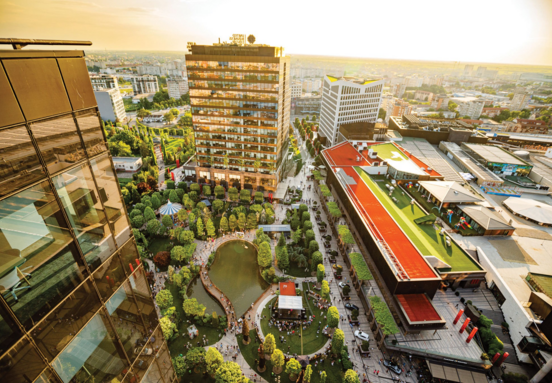Overall, gross take-up declined by c.40% compared to 2019 to 214,000 square meters, the lowest level since 2012, while new demand stood at around 70,000 square meters, according to the 2020 annual report released by Colliers. The effects of the “pandemic year” continue to be felt in the Bucharest office sector in 2021, with a recovery likely to last several years.
“In general, the new supply remained well received in Bucharest, as the city still has a low supply on a per capita basis compared to other European service centers, plus a large part of the offices here are fairly old and not up to par with modern standards. But, the moment has not been a favourable one, meaning that some of the new deliveries had below-average occupancy rates, compared to the record year of 2019. Moreover, the pandemic favored the emergence of a secondary market fueled by the extra spaces leased by large corporations. Most of these companies leased speculatively some additional spaces in order to match the expected increase in the number of employees. Based on our estimates, the sublease offer at the end of 2020 was already in excess of 60,000 square meters, more than 2% of the stock and this only increased in the first quarter of 2021”, explains Sebastian Dragomir, Partner and Head of Office 360° at Colliers.
In the sublease market, as a positive aspect, a significant part of the upcoming tenants in subleased spaces, some of which likely were not accustomed to modern offices until now, may extend their leases with the landlord a few years. This market was fueled by the coronavirus pandemic hit, with most employees in offices starting to work from home. Also, the explosion in coronavirus cases as of autumn 2020 scrapped the plans for a come back. In general, somewhere between 10% and 20% of employees came to work, but a lot of companies had single digit percentages.
“We are now seeing landlords sometimes offering leases below the 5-year standard duration and they are also a bit more flexible on the break options. Further pressures on rents are emerging from the rising sublease market, which offers prospective tenants fitted-out offices at quite attractive rents and even more flexible conditions. However, the impact on rents is likely to be nuanced and prime buildings should be fine: they tend to have big blue-chip tenants and though these may start subleasing part of their offices, the very good offices in Bucharest have had above average occupancy this past cycle and we would expect things to remain like this”, says Sebastian Dragomir.
“Furthermore, we see the undersupply of modern offices in Bucharest as an insulating factor over the longer term and we would rather expect the modern office stock to start growing again in a few years; consequently, it could surpass 4 million square meters by the end of the new decade, and might even close in on the 5 million milestone, if no other (economic) crisis will show up on the radar. Meanwhile, regional cities will remain more budget-friendly alternatives compared to Bucharest and will continue to offer somewhat less tight labour markets. We expect these to start growing faster than Bucharest sometime this decade”, concludes Sebastian Dragomir, Partner and Head of Office 360° at Colliers. (source: Colliers)







